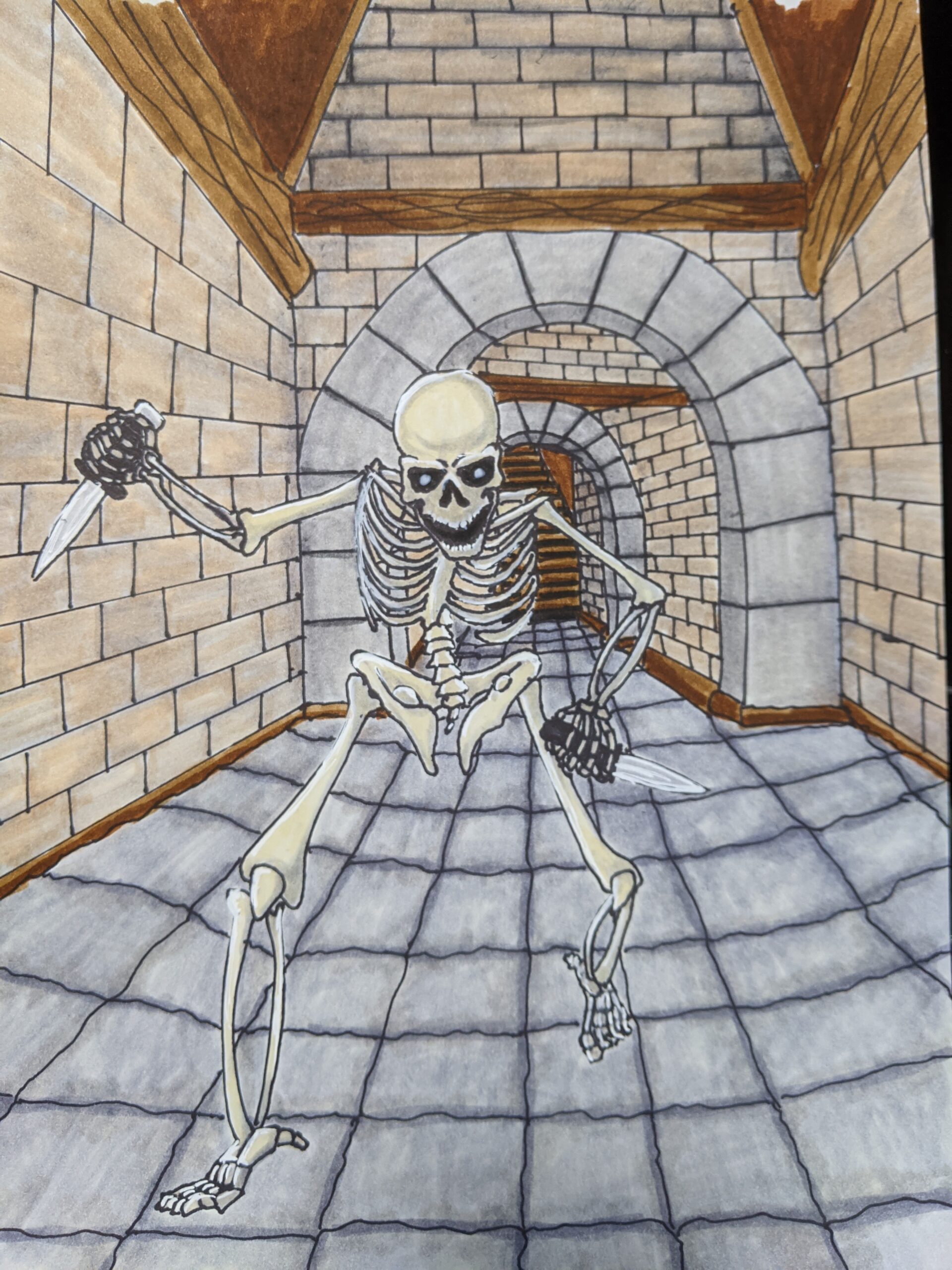9×12 Brush Pen on paper
This drawing was one I did for one of the halloween drawing prompt social media things.
Titled The Dead Rise, it was prompted by “skeleton” and was inspired by another friends recent drawing of a DnD Skeleton warrior. The one flaw I assign this particular drawing is that in Dungeons and Dragons, you never encounter just one of these damn things….but maybe this is just the first one charging at the party. Boy will they be surprised when they kill it easily, think the threat is gone but then hear the rest of the crypts emptying.
At any rate, here are some words about skeleton warriors in art and games.
Skeleton warriors are a recurring motif in various forms of art and entertainment, including role-playing games like Dungeons & Dragons (D&D). Here’s a discussion covering their depiction in art and their role in gaming:
Skeleton Warriors in Art:
- Historical Depictions: Skeleton warriors have been depicted in art for centuries, often as symbols of death, mortality, and the afterlife. They are commonly found in medieval art, particularly in depictions of death and resurrection.
- Fantasy Art: In fantasy art, skeleton warriors are often portrayed as undead warriors animated by dark magic or necromancy. They are typically depicted as skeletal figures wielding weapons and armor, sometimes adorned with tattered remnants of clothing or armor.
- Symbolism: Skeleton warriors can symbolize themes of death, decay, and the inevitability of mortality. They are often used to evoke a sense of dread or foreboding in artistic representations.
Skeleton Warriors in Role-Playing Games:
- Dungeons & Dragons: In D&D and similar tabletop role-playing games, skeleton warriors are a staple enemy encountered by players. They are often depicted as low-level undead creatures animated by necromancers or dark magic.
- Role and Abilities: Skeleton warriors are typically depicted as melee combatants, wielding weapons such as swords, axes, or spears. They are usually portrayed as mindless undead creatures, driven solely by the command of their creator.
- Encounters: Skeleton warriors are commonly encountered in crypts, graveyards, and other locations associated with death and the undead. They may serve as guardians of tombs or as minions of powerful necromancers.
- Variations: In addition to traditional humanoid skeleton warriors, D&D includes variations such as skeletal champions, skeletal mages, and skeletal dragons, each with their own unique abilities and challenges for players.
Role and Gameplay:
- Combat Encounters: Skeleton warriors often serve as basic adversaries in combat encounters, providing players with opportunities to engage in tactical combat and overcome challenges.
- Horror Element: Their undead nature and association with death add a horror element to gameplay, creating tension and suspense as players navigate treacherous dungeons and face off against necromantic foes.
- Role-Playing Opportunities: Skeleton warriors can also provide role-playing opportunities for players to explore themes of morality, mortality, and the nature of undeath in their characters’ interactions with these creatures.
Conclusion:
Skeleton warriors hold a significant place in both art and role-playing games, where they serve as iconic symbols of death and undeath. Whether depicted in haunting artwork or encountered as adversaries in tabletop adventures, they add depth, challenge, and thematic richness to the worlds they inhabit.

